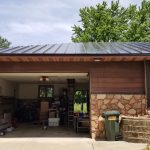Following dire reports of bee-colony collapses in recent years, at least three new solar sites in Florida and Maryland are trying to provide safe havens for these critical links in the food chain.
By FRANK ANDORKA for PV Magazine
As you drive past three new utility-scale arrays in Maryland and Florida, you likely won’t notice a difference. But the bumble bees on which so much of the U.S. food supply depend for pollination will, and they’ll be thankful.
Over the past decade or so, bumble bee populations in the United States have been plummeting thanks to a phenomenon called “colony collapse” (the author was the editorial director of Pest Management Professional during the height of the controversy). Scientists could never definitively identify the reasons for the collapse, though most environmental activists blamed the use of neonicotinoid pesticides.
(Neonicotinoids act like nerve gas on insects and yes, as the name implies they are based on tobacco-like substances.)
Where were we? Oh, right, the solar connection.
 To combat “colony collapse”, two solar developers – Cypress Creek Renewables and Florida Power & Light (FPL) – have built three utility-scale solar farms that are landscaped with native plants and flowers to provide rich habitats to support the bees’ flagging populations.
To combat “colony collapse”, two solar developers – Cypress Creek Renewables and Florida Power & Light (FPL) – have built three utility-scale solar farms that are landscaped with native plants and flowers to provide rich habitats to support the bees’ flagging populations.
In Maryland, which actually has a law giving preference to solar farms that protect the bees, Cypress Creek has built the 9 MW Baker Point Solar Farm in Frederick County.In addition to the more than 34,000 solar modules, the site will also be home to honey-producing hives that each produce an average of 30 pounds of honey each season.
Don’t worry, though: The bees will not be left to the tender mercies of Cypress Creek’s engineers to ensure their survival.





